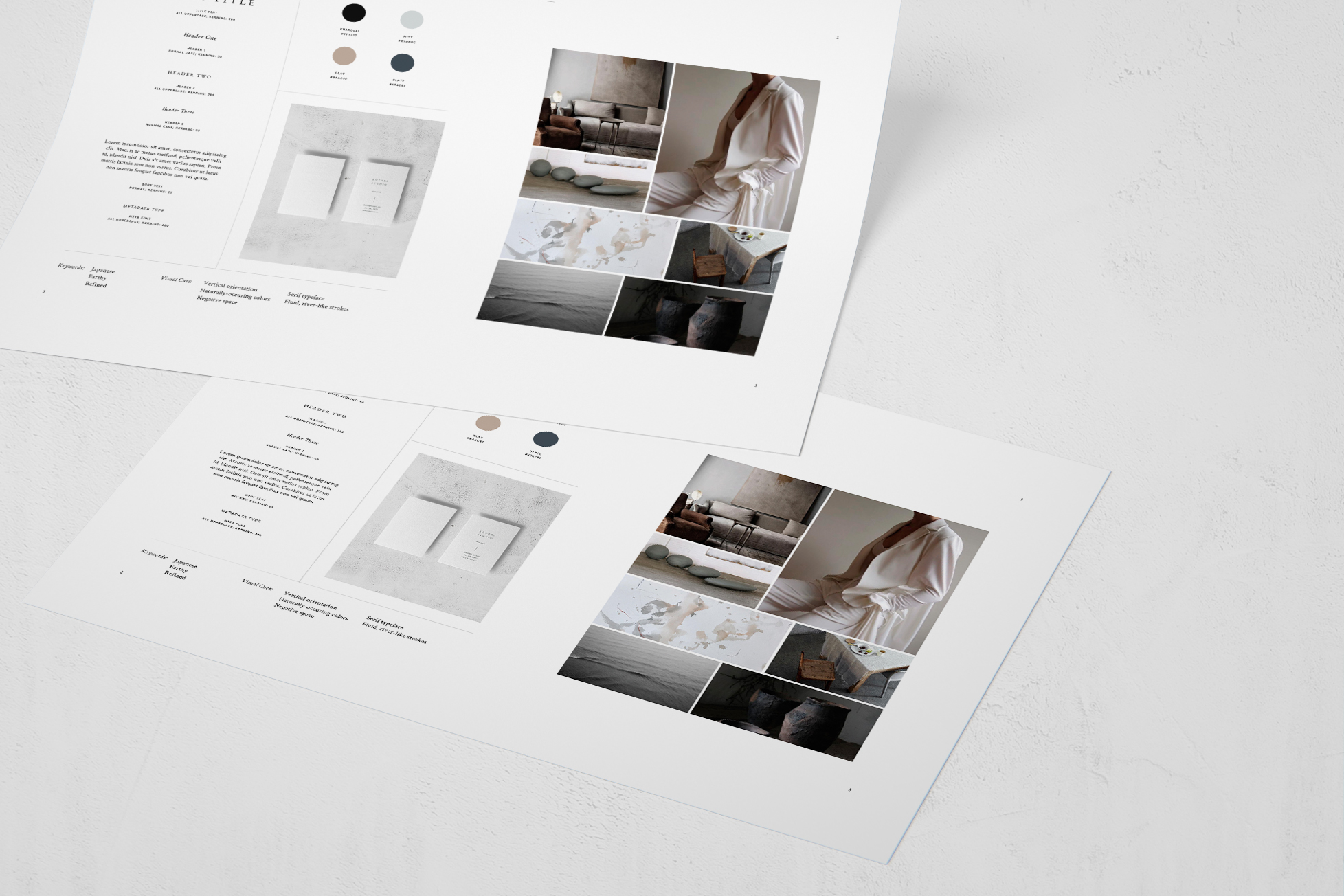Branding Your Business: A Step-by-Step Guide
Wondering what this whole "branding" thing is about?
Everyone’s talking about “branding” – but most of us don’t understand what it entails. We’ve compiled a comprehensive guide that covers the first steps of our branding process for entrepreneurs who are just beginning to visualize their business concept, or may not have the resources to hire a designer at this time. We've got your back.
Introduction
First things first – what is branding, exactly? Does it refer to the logo? The business name? The fonts used on a company’s website? The answer is, all of the above. In other words –
Branding refers to a cohesive system of typefaces, colors, imagery and language that encompasses a brand.
Now that we’ve gotten that out of the way, let’s begin.
1. Pitch
A crucial first step to the branding process is, in fact, not visual at all. Before anything, you must define your brand’s “elevator pitch.” Though the name may suggest otherwise, “short and catchy” does not necessarily make for a good pitch. Here are some examples:
A Poor Pitch:
“We make high-end sleepwear for young women who enjoy luxury.”
A Good Pitch:
“We are a sleepwear brand that offers luxuriously comfortable pajamas for millennial women. Our brand redefines sleepwear as an integral part of a woman’s wardrobe.”
What’s the difference? Unlike the poor pitch, the good pitch includes the following:
1) What the brand offers
2) Who the brand serves
3) How the brand adds value or a unique perspective to the world
For your own pitch, distill these three criteria into a colloquial 2-3 line paragraph that you could easily pitch to a potential client or investor during a brief elevator ride.
2. Keywording
Based on the above pitch, come up with 3 keywords – or adjectives – that you would like your audience to associate with your brand. Leverage the power of singular words to develop the foundation of your brand identity. Below are some examples:
Pitch / keywords:
A lingerie brand for millennial women / Fun, feminine, ethical
An eyewear brand for working professionals / Modern, refined, luxurious
A bedding brand specializing in handwoven linen / Soft, natural, timeless
3. Color Story
Determining the appropriate “color story” for your brand helps you engage meaningfully with your audience. Review your keywords and what colors may be associated with them. Consult online color archives like Coolors.co until you find a combination of 4 color swatches that align with your keywords. Here are some palettes pulled from our previous list of examples:
Fun, feminine, ethical
Modern, refined, luxurious
Soft, natural, timeless
4. Typography
Once you have an established color story, review your keywords again and browse web-friendly typeface foundries like Google Fonts (free!) and Typekit (requires an Adobe CC subscription). Select 1 header font (used for titles and section headings) and 1 body font (used for paragraph text) that align with your keywords. Use these two fonts exclusively for all outgoing visuals – no exceptions. Consistency is key. Here are some fonts pulled from our previous list of examples:
Fun, feminine, ethical
Modern, refined, luxurious
Soft, natural, timeless
5. Logo Creation
Once we have established a color story and typefaces, we are ready to design the logo. We recommend hiring a professional for this step, but if you do not have the resources at this time, try typing your company name out in your designated typeface – likely your header font – and playing around with it, either on Photoshop (download your free trial here) or free graphic platforms like Canva. Experiment with monograms, letter-spacing and adding graphic elements while staying true to your keywords. But don’t overdo it – legibility is key.
Alternatively, if you decide that you would like a professionally designed logo, please look through our wordmark logo collection here.
Conclusion
A significant part of branding pertains to language, not just visuals. Notice how the keywords were an integral part of the entire process. Although it may be tempting to dive straight into color archives and type foundries to develop your brand, take some time to hone down the pitch and keywords associated with your brand first. These will not only serve as the building foundation of your overall look, but also become useful when drafting copy for future marketing materials.
What’s next?
Once you’ve successfully crafted a brand identity and would like to apply it to some ready-made print documents or web templates, visit our shop to get started. Our templates include business cards, invoices, pricing guides, media kits, Instagram templates and more. Though our templates are tailored with specific font recommendations, they can easily be swapped out with your designated typeface. Similarly, your logo can be embedded anywhere on your template to further customize your look.







